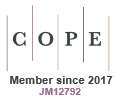CP24363Unraveling the genetic diversity and evolutionary lineages of Catharanthus roseus cultivars through plastome analysis and DNA barcoding
This study has highlighted the significance of investigating genetic diversity in Catharanthus roseus by exploring how genetic variations influence the evolution of trait like petal color and pattern. Understanding this genetic diversity is crucial for improving plant breeding, and conservation. The research addresses the challenge of identifying meaningful genetic markers that can distinguish among cultivars and help map their evolutionary relationships. This work contributes to the broader goal of advancing our understanding of plant evolution within the Apocynaceae family.
This article belongs to the collection: Plant breeding- and genetics-based tools for food security under changing climate.
CP24363 Abstract | CP24363 Full Text | CP24363PDF (1 MB) | CP24363Supplementary Material (4.1 MB) Open Access Article





